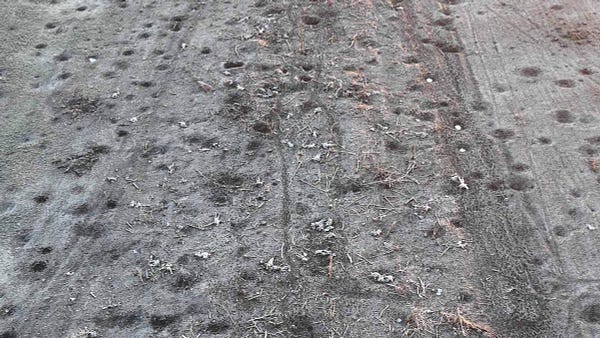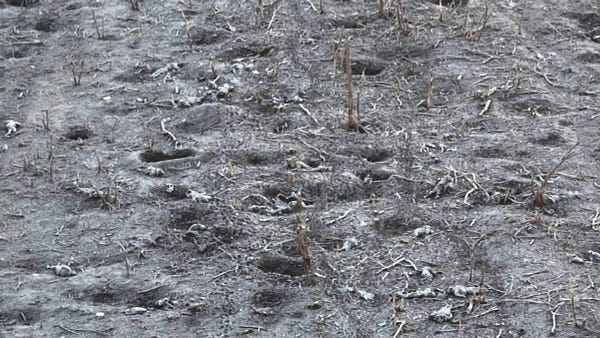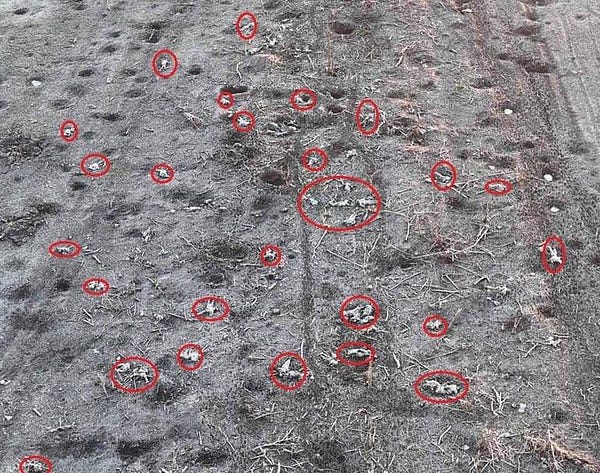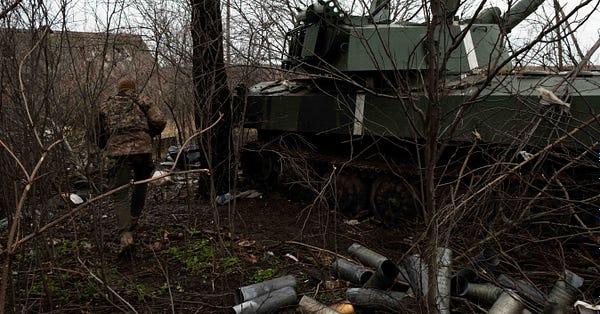Ukraine will launch its next set of attacks when they determine they have destroyed enough Russian equipment and troops to assure an offensive a reasonable chance of success. JL
Phillips O'Brien reports in his substack:
The Ukrainian decision on when to move forward will come when they determine that the Russian forces facing them in terms of soldiers, and equipment that can be maintained and supplied, has reached a low enough level that an offensive has a reasonable (chance of) success. For over a century raw numbers of soldiers has not been decisive. Modern industrial war requires top equipment and well-trained soldiers far more than masses of poor conscripts. We can see that in the Russian experience so far. Putin’s second army, formed since the conscription in September, has performed worse than the professional force. They have died in huge numbers and achieved only small gains.When will the Ukrainians start trying to move forward?
Last week in the weekend update I ended up discussing just the first part of the road to Ukrainian victory, which is the intense wasting phase that we are seeing now. In this update, I will talk about the way Ukraine might press forward once Russian forces have been wasted enough for them to advance.
How much attrition is needed before the Ukrainians attempt to move forward?
The Ukrainians, as Ive said before, are fighting very intelligently. I think they’ve learned from their own experience how difficult forward movement is in this war, and are thus using their superiority in range, accuracy, command and control, morale and training to waste down what I referred to as Putin’s second army. It’s a brutal process, but does seem to be happening. I have not tweeted out pictures of dead bodies during the war (a personal choice, there are enough out there, and Ive tried to favor a more dispassionate analysis), however these pictures that have come out of the carnage around Bakhmut reveal just how brutal this stage of the war is at present.
The area is littered with Russian corpses (unsupported by vehicles). The Ukrainian Defense Ministry even tweeted out its own version of the picture, with circles around the different Russian bodies.
This kind of destruction of Russian soldiers became the theme this week, with news coming out of the New Years eve attack on a Russian troop concentration at Makiivka. Clearly the Ukrainians were able to get intelligence about a large number of Russian soldiers being housed in the same area, and quickly moved to take it out. The exact toll wont be known, but considering that the Russian government quickly admitted that almost 90 Russian soldiers had died, I think we can safely assume 200 plus. Here is a good BBC description of what we know of the attack.
This is what we do and don't know about Ukraine's New Year attack on Russian soldiers in Makiivka. In 3 mins. It already has the largest death toll that Russia has acknowledged from one attack in this war. Produced by Mary Fuller and Ellyn Duncan. bbc.co.uk/news/world-eur…One final note on this—the stories that have come out about this from the Russian side, reinforce the idea that the Russian military is not actually showing great improvement. Quickly the story was spread that the attack was the fault of the low-rankings recruits, who supposedly used their cell-phones (against regulations) and alerted the Ukrainians to their existence. This kind of framing should provide satisfaction to Ukraine and it supporters. It shows that covering their asses and blaming others is still standard OP in the Russian military. I would be far more concerned about the Russian military improving if someone senior was willing to take the blame.
So there are real indications that reducing the number of Russian soldiers has become a very high priority for Ukrainian targeting. That indeed has been something that the outside analysis of the war has gravitated towards, and stories have started appearing about Russia regaining the initiative in the future as it generates more troops. There have been two stories in particular (both paywalled) one by Barry Posen and the other by Condoleeza Rice and Bob Gates.
https://www.foreignaffairs.com/ukraine/russia-rebound-moscow-recovered-military-setbacks
Its interesting to see that stories that have very different purposes (the first to push the Ukrainians to negotiate, the second to try and get more aid to Ukraine quickly) would take the same line about a coming improvement of Russian strength. And in the larger sense, there are signs that the Russian Army might soon get numerically much larger. The Ukrainians have recently claimed that Putin is about to undergo a third round of forced conscription, in a desperate attempt to raise more troops for his campaign. There are even stories that he will aim to add 500,000 new soldiers to his army, starting with a new effort after Jan 15.
https://www.politico.eu/article/russia-mobilize-new-conscript-military-intelligence-war-ukraine/
The issue I have with these stories is that the focus on what I would consider the less important question on military force regeneration—raw numbers of soldiers in uniform. For well over a century raw numbers of soldiers has not been on its own decisive. Modern industrial war requires top line equipment and well-trained soldiers far more than masses of poorly motivated conscripts. We can see that in the Russian experience so far. Putin’s second army, much of it formed since the conscription in September, has actually performed worse than the more professional force the Russians started the war with. Since September, Russian soldiers have died in huge numbers and achieved only small gains. There endless attempts to take Bakhmut have achieved nothing meaningful, and just resulted in the kinds of casualties that we see in the pictures above. This is the subject of Illia Ponomarenko’s most recent story.
My latest from Bakhmut: "We don’t give a fuck if that’s Wagner or anyone else, we’ll keep fighting anyway. But we want to fight and win, not just fight and die sooner or later.”All I would say, is what is missing in this discussion of a Russian recovery is what is arguably the most important data—and that is what equipment that the Russians are making or can procure for any new wave of conscription and then some idea of the kinds of training that will be provided for the new troops. Without that, its impossible to say that the Russians can generate anything but a mass of troops that will perform considerably worse than the forces
It was interesting that in this propaganda video, the Ukrainian defense ministry actually talks about encouraging the Russian soldiers to turn over information on more important targets (equipment, logistics, command and control) and in exchange they will not have their troop concentrations targeted.
Monitoring equipment replacement is clearly something that matters hugely to the Ukrainians. They even publicly released a their estimates about Russian missile and drone production—to show how closely they are tracking replacement and usage.
Really interesting estimates of Russian production. Long story short; RussIa cannot replace usage. This puts to the sword the idea that Russia has huge resources to devote to this war. It doesn’t. It lacks the productive capacity to replace all but a small part of its losses.Security formula: The missile power of the “world's second army” is inversely proportional to the strictness of sanctions compliance multiplied by the strength of Ukrainian air defense. https://t.co/nYoQJYzvjqOleksii Reznikov @oleksiireznikovThere will be similar efforts by Ukrainian intelligence for all aspects of Russian war production—including AFVs, trucks, all other military vehicles, artillery, ammunition, etc, etc. From just this one chart, its clear that they have intellectually a good handle on this.
Ultimately the Ukrainian decision on when to launch any kind of attempt to move forward will come when they determine that the Russian forces facing them both in terms of soldiers, but probably more importantly in terms of equipment that can be maintained and supplied, has reached a low enough level that an offensive has a reasonable attempt at success. They are clearly thinking about it—and signs are that they think sometime in the very late winter or early Spring would reach that point. The Deputy Head of Ukrainian military intelligence (who has been very accurate with his public pronoucements in the past) has talked about this March seeing a pretty intense time for fighting.
Fascinating that Budanov is telegraphing a possible Ukrainian offensive starting in March. Partly you say, this must be bluff. Yet he has been pretty accurate with his public statements before.Very general predictions from Budanov about a spring offensive. He also told ABC that Ukraine has intelligence from human sources that Putin has cancer, but that he expects the war will be over before the Russian dictator dies. https://t.co/idT0iYFKCVEuan MacDonald @Euan_MacDonaldThat would make sense. If Putin does another round of mobilization in the second half of January, it wont generate anything but useless cannon fodder by March.
Of course it could all be bluff!
The process, though, is probably right. The Ukrainians will be monitoring the destruction they are meeting out on Russian forces and comparing that to what the Russians can make and (crucially) deploy to make up those losses. When they believe that the destruction has gotten low enough and the deployment of support cant quickly make up the difference—that is when they will act.
So I don’t have a date, but I do have what I will think is the kind of thinking that is governing when Ukraine will try and move forward.





























0 comments:
Post a Comment